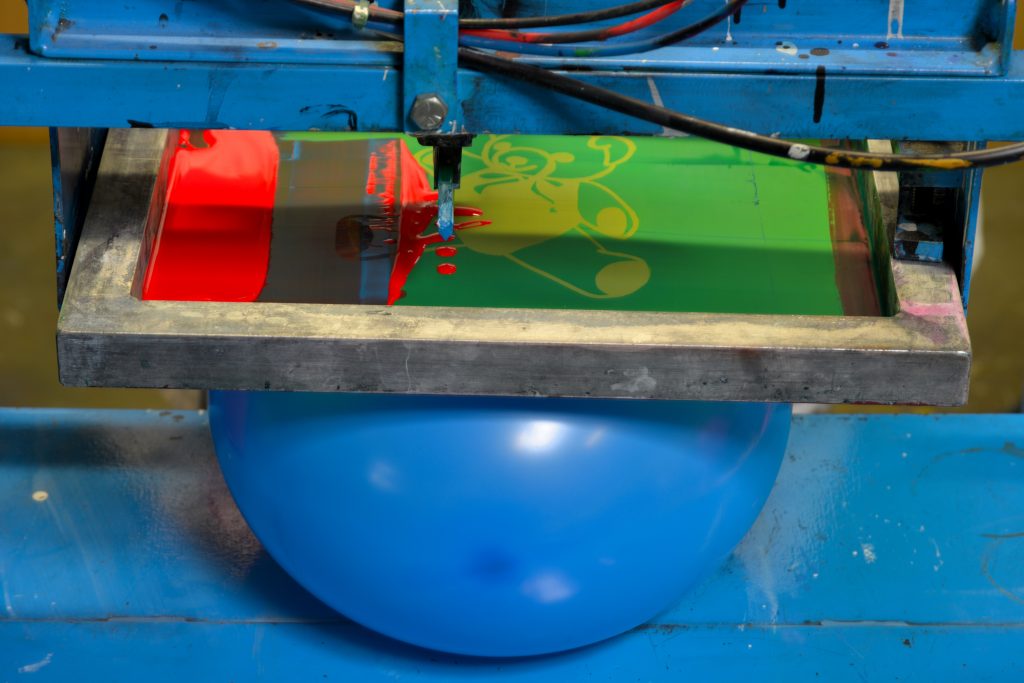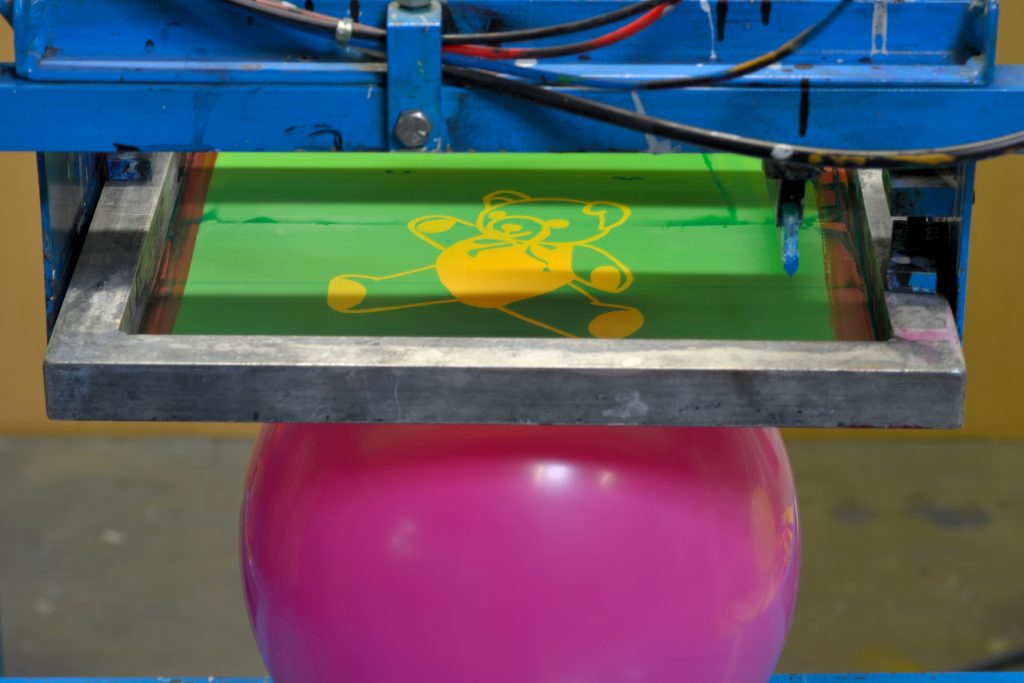Silkscreen Mesh Sizes
Our balloon printing inks offer versatility with the ability to print on a range of mesh sizes. To ensure the best results, here are some rules-of-thumb to consider:
- 80, 100, 120 mesh screen: Very thick ink application on printed product; Ink on the silk will not dry out; Thinner: Isoparrafines with a boiling point of 120 °C – 150 °C.
- 130, 140, 150 mesh screen: Less thick ink application on printed product; Ink on the silk will dry after longer standing time; Thinner: Isoparrafines with a boiling point of 150 °C – 170 °C.
- 160, 180 mesh screen: lesser ink application on printed product; Ink on the silk will dry out fast; Thinner: Isoparrafines with a boiling point of 150 °C – 200 °C.
To achieve the desired print image, whether through overprint or raster-print, it is important to use the appropriate silk fineness. Testing in your printing department will help determine the optimal combination of silk fineness and thinner. With our printing inks, the small particle size allows for the use of even the finest silks.

Cleaning the Silkscreen

We understand that it is important for our customers to take care of their precious silk meshes and clean them for their next use. As solvents are also expensive we know it can be a struggle to find the right solution. We recommend to put the silk screen in a small bath of solvent after usage. When you come back a little later you can easily remove residue with a paint brush or similar soft brushes. We recommend using some sort of white spirit, which is an umbrella term for liquid hydrocarbon mixtures with a boiling point of 130°C and 220°C. However there are big differences between products and it is up to you of how much quality solvent you want to use for cleaning purposes. We do not recommend using white spirits of low quality to be mixed with our printing inks for printing purposes! Please only use large quantity of solvents in a well-ventilated area and keep your health and safety in mind!
